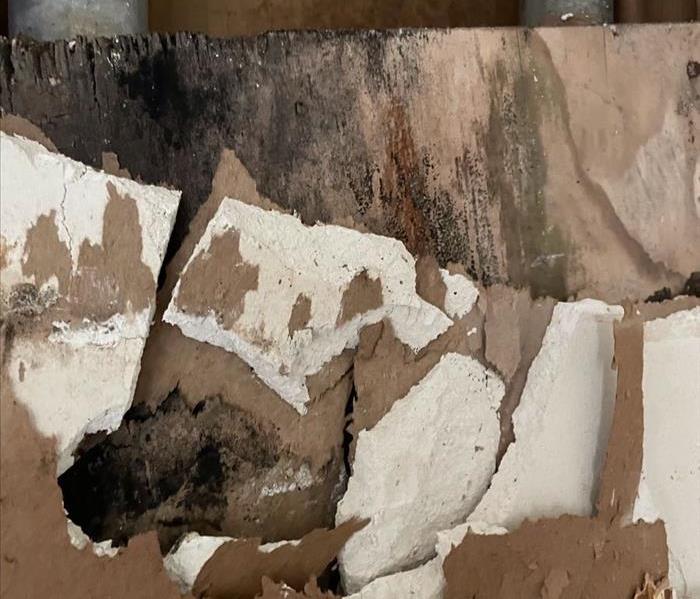Identifying Black Mold: What Does it Look Like?
10/26/2023 (Permalink)
Black mold, scientifically known as Stachybotrys chartarum, can be one of the most concerning household molds. Though the harmful effects of black mold are apparent, it can be challenging to identify them alone by appearance. In this blog, we'll explore the physical characteristics of black mold and how you can differentiate it from other types of mold.
Color and Appearance
As the name suggests, black mold tends to appear dark green or black in color. It usually has a slimy texture and prefers to grow on materials with high cellulose content, such as drywall, wood, or wallpaper. Black mold can also grow on surfaces with high moisture content, making it prevalent in areas with water damage or frequent flooding. Unlike other molds, black mold appears in clusters and can have a strong, musty odor. It's essential to note that not all molds that appear black in color identify as black mold, and professional mold testing may be necessary to ensure accurate identification.
Growth Patterns
Black mold tends to grow in areas that are damp or humid, and as such, it often appears in poorly ventilated areas such as bathrooms, basements, and attics. Identifiable by the slimy texture and black appearance, black mold can also spread rapidly in areas with high moisture levels, such as those affected by water damage, flooding, or high humidity. It's important to keep an eye on any areas that may be conducive to mold growth and address them promptly to prevent the spread of black molds.
Differentiating from Other Molds
Identifying black molds can be tricky, as they can often be mistaken for other types of molds. Still, a few physical characteristics can help differentiate them. Blacklike molds are usually dense and slimy compared to other molds and gradually become darker, and may appear black when mature. Another way to differentiate black mold is by the presence of its musty odor, which is not present in other molds. In some cases, mold testing may be necessary to determine if a mold is specifically black mold.
If you suspect the presence of black mold or any other type of mold in your home or workplace, it is recommended to consult a certified mold inspector or a professional mold remediation service. They can accurately assess the situation, conduct necessary testing, and implement appropriate measures to ensure the safety and well-being of occupants. Remember, early detection and proactive action are key to addressing mold issues effectively and maintaining a healthy living or working environment.





 24/7 Emergency Service
24/7 Emergency Service
